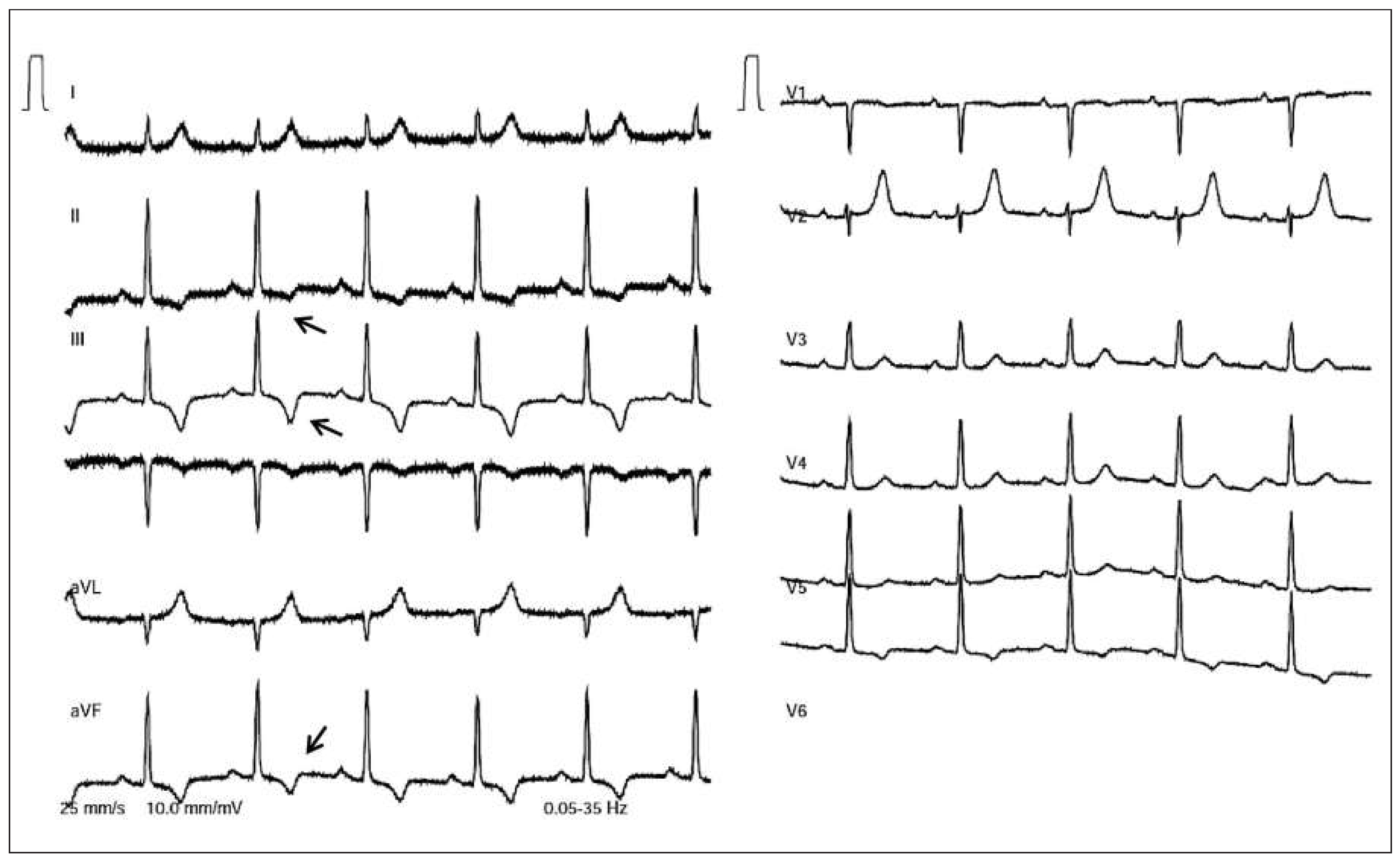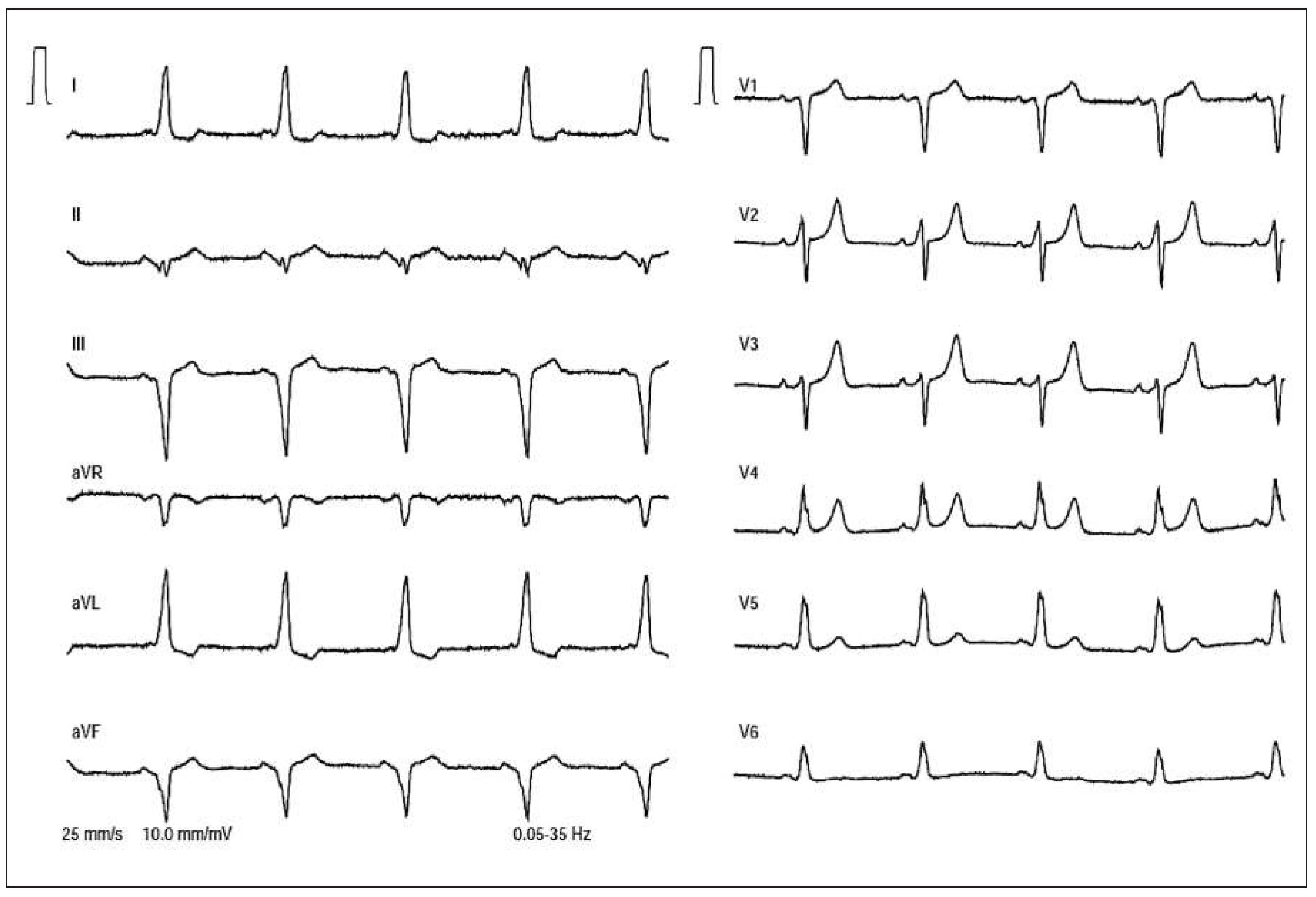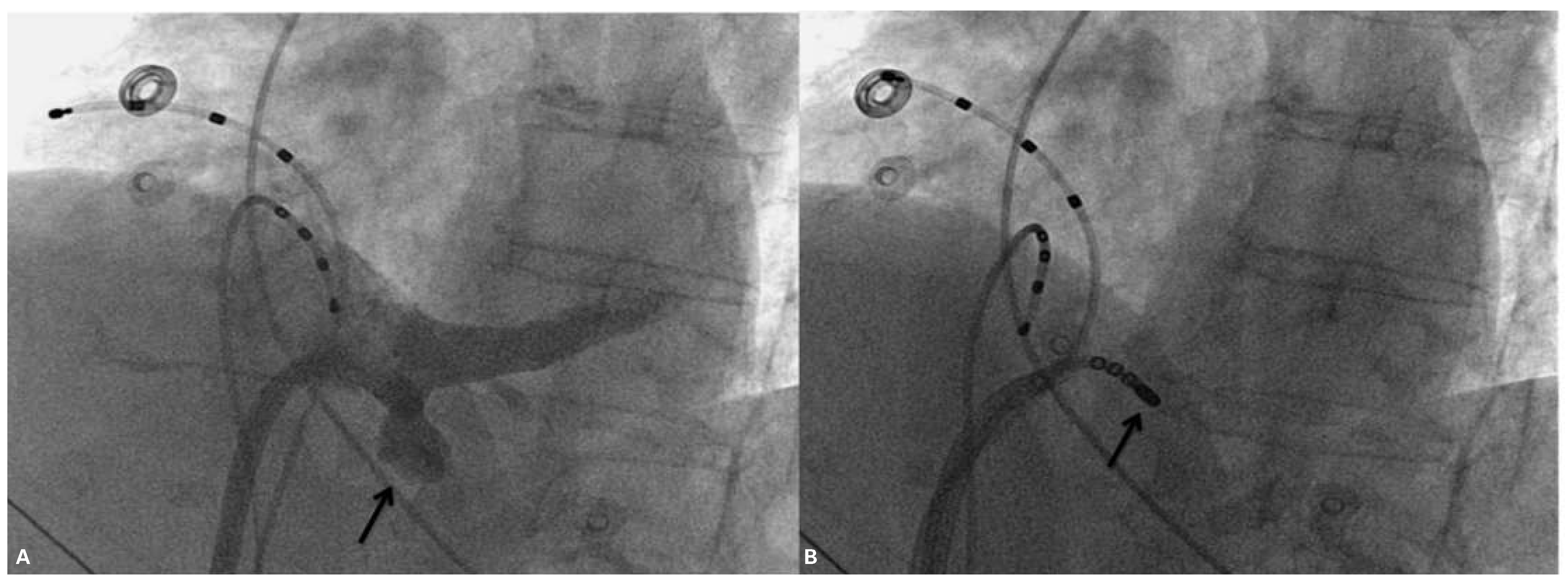Wolff-Parkinson-White Syndrome and Diverticulosis of the Heart?
Case presentation
Questions
Comment

Disclosure statement
References
- Arruda, M.S.; McClelland, J.H.; Wang, X.; Beckman, K.J.; Widman, L.E.; et al. Development and validation of an ECG algorithm for identifying accessory pathway ablation site in Wolff-Parkinson-White syndrome. J. Cardiovasc. Electrophysiol. 1998, 9, 2–12. [Google Scholar] [CrossRef] [PubMed]
- Sun, Y.; Arruda, M.; Otomo, K.; Beckman, K.; Nakagawa, H.; et al. Coronary sinus-ventricular accessory connections producing posteroseptal and leh posterior accessory pathways: Incidence and electrophysiological identification. Circulation. 2002, 106, 1362–1367. [Google Scholar] [CrossRef] [PubMed]
- Takahashi, A.; Shah, D.C.; Jaïs, P.; Hocini, M.; Clementy, J.; Haïssaguerre, M. Specific electrocardiographic features of manifest coronary vein posteroseptal accessory pathways. J. Cardiovasc. Electrophysiol. 1998, 9, 1015–1025. [Google Scholar] [CrossRef] [PubMed]
- Bennett, D.H.; Hall, M.C. Coronary sinus diverticulum containing posteroseptal accessory pathway. Heart. 2001, 86, 539. [Google Scholar] [CrossRef] [PubMed]
- Blank, R.; Dieterle, T.; Osswald, S.; Sticherling, C. Images in cardiovascular medicine. Wolff-Parkinson-White syndrome and atrial fibrillation in a patient with a coronary sinus diverticulum. Circulation. 2007, 115, e469–71. [Google Scholar]
- Aunes-Jansson, M.; Wecke, L.; Lurje, L.; Bergfeldt, L.; Edvardsson, N. T wave inversions following ablation of 125 posteroseptal accessory pathways. Int. J. Cardiol. 2006, 106, 75–81. [Google Scholar] [CrossRef] [PubMed]


© 2016 by the author. Attribution - Non-Commercial - NoDerivatives 4.0.
Share and Cite
Celikyurt, Y.U.; Sticherling, C.; Reichlin, T.; Schaer, B.; Osswald, S.; Kühne, M. Wolff-Parkinson-White Syndrome and Diverticulosis of the Heart? Cardiovasc. Med. 2016, 19, 34. https://doi.org/10.4414/cvm.2016.00382
Celikyurt YU, Sticherling C, Reichlin T, Schaer B, Osswald S, Kühne M. Wolff-Parkinson-White Syndrome and Diverticulosis of the Heart? Cardiovascular Medicine. 2016; 19(1):34. https://doi.org/10.4414/cvm.2016.00382
Chicago/Turabian StyleCelikyurt, Yengi Umut, Christian Sticherling, Tobias Reichlin, Beat Schaer, Stefan Osswald, and Michael Kühne. 2016. "Wolff-Parkinson-White Syndrome and Diverticulosis of the Heart?" Cardiovascular Medicine 19, no. 1: 34. https://doi.org/10.4414/cvm.2016.00382
APA StyleCelikyurt, Y. U., Sticherling, C., Reichlin, T., Schaer, B., Osswald, S., & Kühne, M. (2016). Wolff-Parkinson-White Syndrome and Diverticulosis of the Heart? Cardiovascular Medicine, 19(1), 34. https://doi.org/10.4414/cvm.2016.00382



